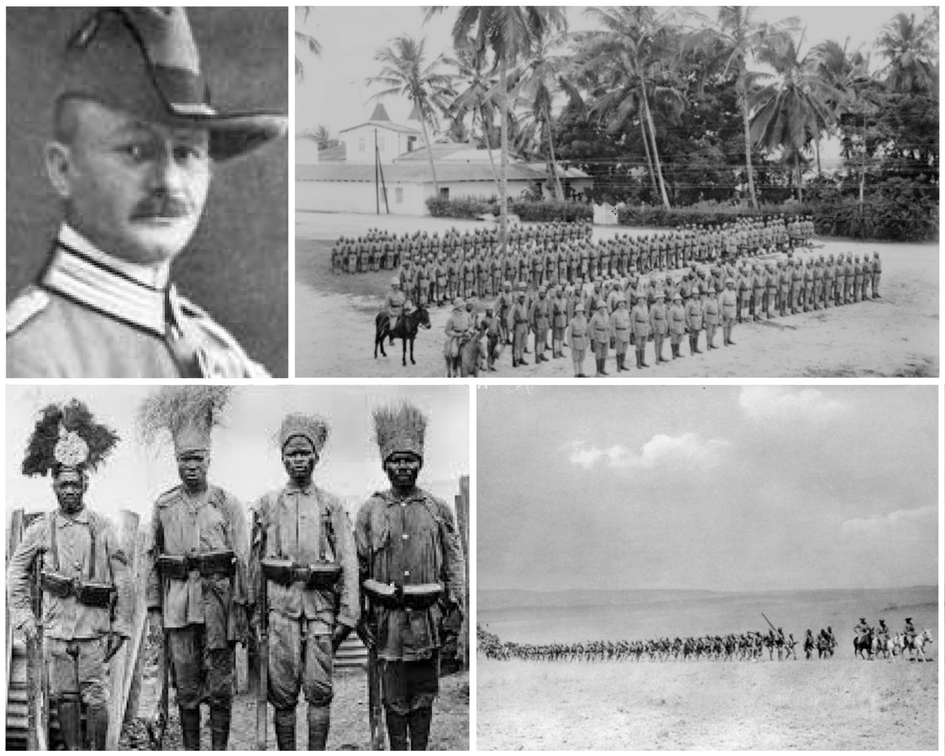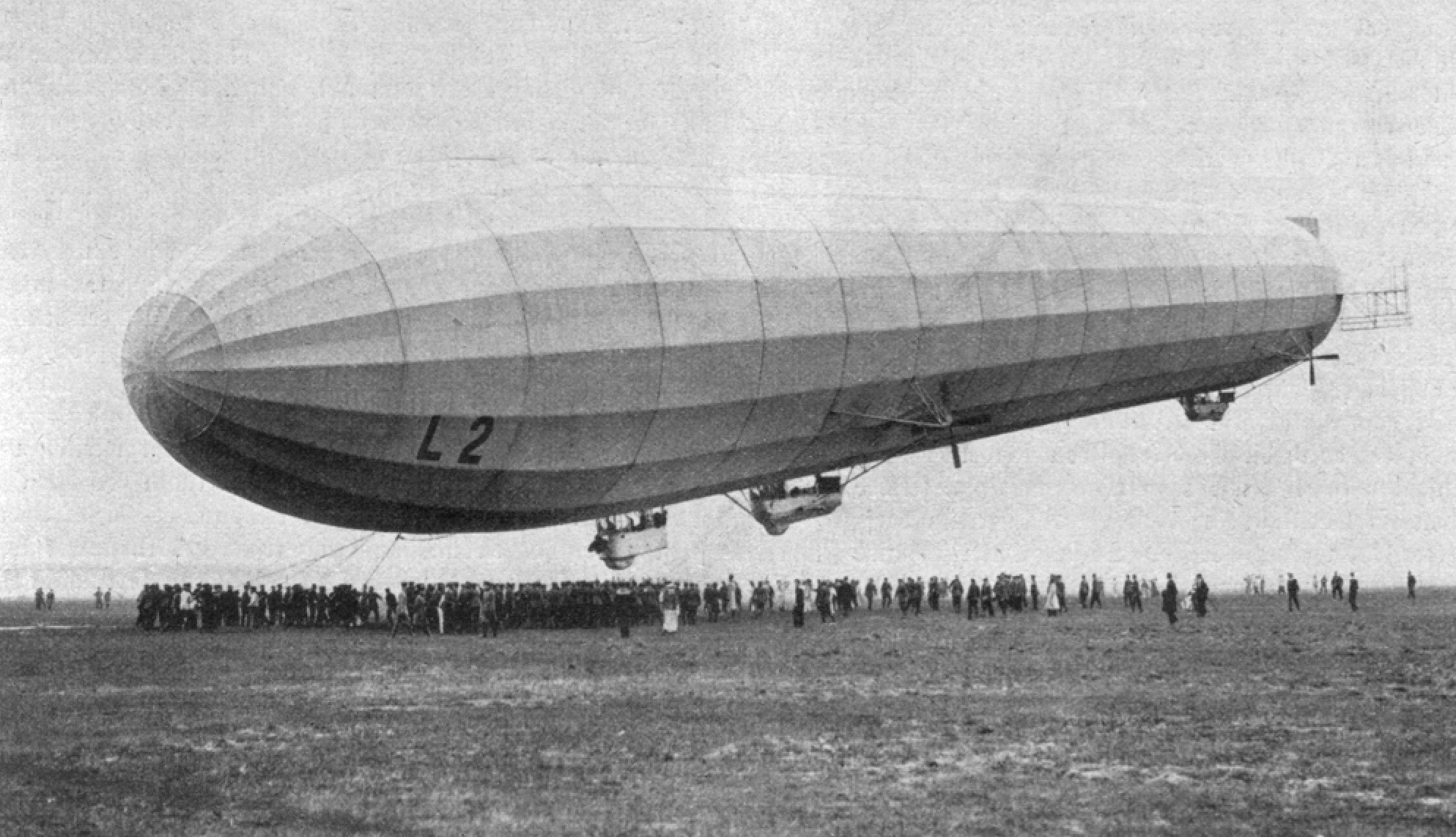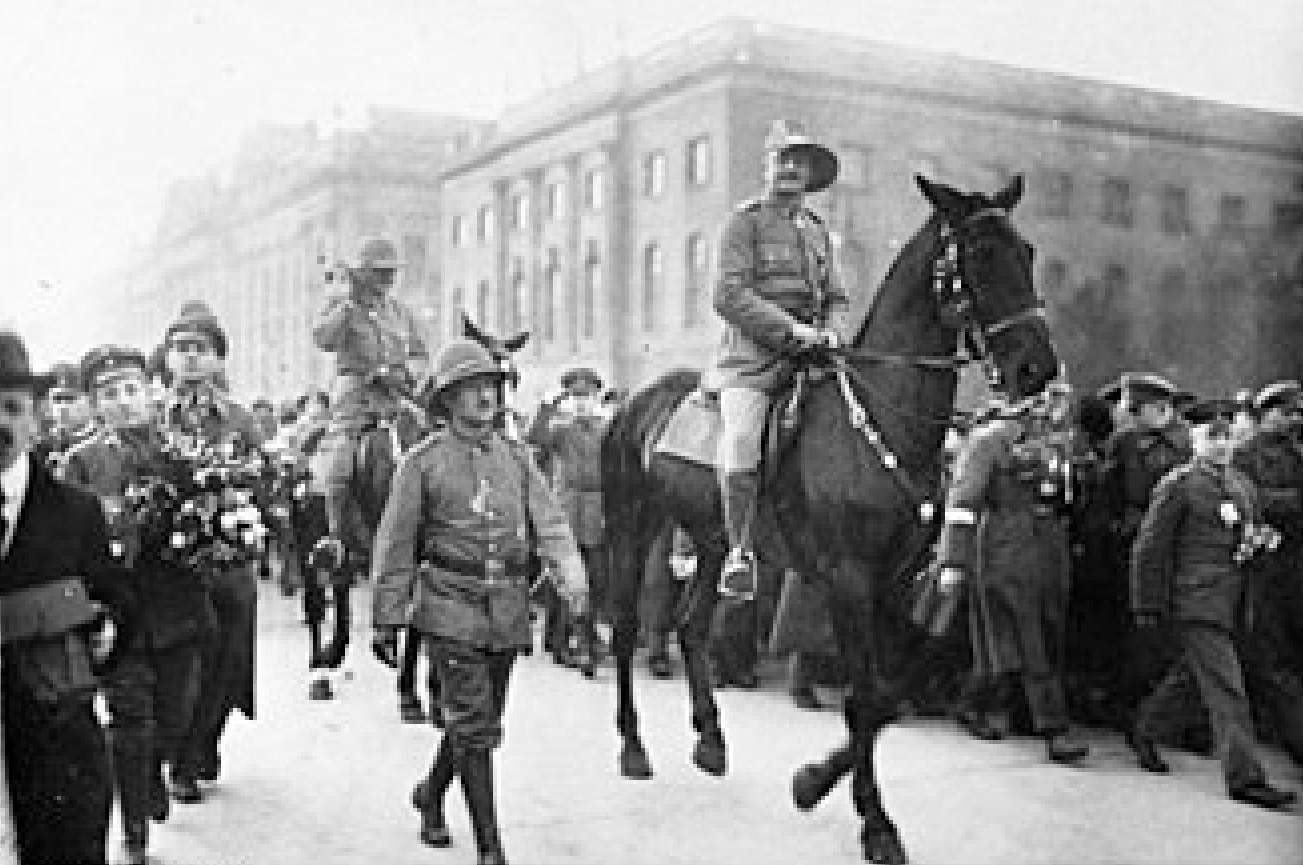
Rating – Four Stars
Gaudi weaves an intriguing chronicle of the ferocious campaign in East Africa between the German Schutztruppe and British Commonwealth troops during the Great War—1914 to 1918. He develops the account of this little known Afrikanischer Krieg from the German perspective and in an easy, empathetic, and coherent style. The account is so compelling that we experience the details as if we are participants in the narrative.
The protagonist is Oberstleutnant (Lieutenant Colonel) Paul Emil von Lettow-Vorbeck of Kaiser Wilhelm’s Imperial Army. For four years, Lettow-Vorbeck led his Schutztruppe of well disciplined and highly trained German and colonial askaris troops in skillful guerrilla warfare in a classic tactical retreat through East Africa: British Africa (later Kenya), German Equatoria (later Tanganyika), Portuguese East Africa (later Mozambique), and Rhodesia (later Zimbabwe). In failed pursuit were elements of the British Army.

Lieutenant Colonel von Lettow-Vorbeck’s Schutztruppe of almost fifteen thousand troops eluded, perplexed, and defeated the ten-times-larger British forces, inflicting horrendous casualties on their troops.
And, peripheral to the ground war in East Africa, Gaudi recounts exactly how the  German “battleship” SMS Königsberg (actually a light cruiser) from the Kaiserliche Marine escaped from the British battle squadron in the Indian Ocean; the ship’s role as a commerce raider; and its journey up the Rufiji river to hide from the British ships pursuing it. After several weeks of fruitless search, Fleet Air Arm aeroplanes spotted the SMS Königsberg in a remote tributary of the river, hidden under the leafy limbs of a copse of trees. He continues with the particulars of its demise by British naval artillery.
German “battleship” SMS Königsberg (actually a light cruiser) from the Kaiserliche Marine escaped from the British battle squadron in the Indian Ocean; the ship’s role as a commerce raider; and its journey up the Rufiji river to hide from the British ships pursuing it. After several weeks of fruitless search, Fleet Air Arm aeroplanes spotted the SMS Königsberg in a remote tributary of the river, hidden under the leafy limbs of a copse of trees. He continues with the particulars of its demise by British naval artillery.
In another tangential episode, he details the German High Command’s resolve to resupply Lettow-Vorbeck’s isolated Schutztruppe with arms, food, and other necessities.

The scheme was to use the super Luftshiff Zeppelin L57 to carry these supplies to East Africa. In command was Korvettenkapitan (Corvette Captain) Ludwig Bockhold of the Kaiserlich Marine’s Naval Airship Service. The L57, after a harrowing flight, finally reached the Nile River in the Anglo-Egyptian Sudan. But, British Intelligence had broken the German naval codes and sent fake messages to the L57 telling Bockhold to abort the mission and return. He ordered the zeppelin to reverse course and sail to Europe.
In June 1917, Kaiser Wilhelm awarded Lieutenant Colonel von Lettow-Vorbeck  Germany’s highest military award, the Pour le Mérite. In October 1917, the German General Staff promoted Lieutenant Colonial von Lettow-Vorbeck directly to Generalmajor (Major General).
Germany’s highest military award, the Pour le Mérite. In October 1917, the German General Staff promoted Lieutenant Colonial von Lettow-Vorbeck directly to Generalmajor (Major General).
The next year, at the 11th hour, on the 11th day, and in the 11th month of 1918, the guns of the Great War fell silent. Two weeks after the armistice in Europe, Generalmajor von Lettow-Vorbeck (Bwana Obersti) marched his Imperial East African troop, the last German command in the field still undefeated in battle, into Abercorn, Rhodesia. Von Lettow-Vorbeck ordered his Schutztruppe to lay down their arms, and he surrendered to Brigadier General Edward Northey of the British Army. The general accepted von Lettow-Vorbeck’s surrender in the name of King George V.
British Captain W. C. Downes of the The West African Frontier Force commented on the martial skills of Generalmajor von Lettow-Vorbeck, “He was a genius in the art of bush warfare, a man of indomitable spirit—a most remarkable leader of men, who did not know what it was to be beaten.”
 On March 2, 1918, Generalmajor von Lettow-Vorbeck rode through the Brandenburg Gate, Berlin, leading the survivors of the Schutztruppe in a parade, to boisterous cheers from the defeated and disheartened German folk. “’The Lion of Africa’ was the only undefeated German general from World War I still commanding an army of a defeated nation at the Armistice.”
On March 2, 1918, Generalmajor von Lettow-Vorbeck rode through the Brandenburg Gate, Berlin, leading the survivors of the Schutztruppe in a parade, to boisterous cheers from the defeated and disheartened German folk. “’The Lion of Africa’ was the only undefeated German general from World War I still commanding an army of a defeated nation at the Armistice.”
Negatives:
- Only two large-scale maps are in this book. To comprehend the details of the campaign, we need small-scale maps (about 1: 24,000) that highlight the geographic features and the movements of opposing forces.
- Gaudi has a tendency to call most all warships “battleships.” No battleships were involved in the East African campaign.
- He labels the SMS Königsberg a battleship. It was a light cruiser.
- He discusses the “Indian” Gurkhas. The Gurkhas are from Nepal only.
- He states that Kaiser Wilhelm abdicated to Switzerland. He abdicated to the Netherlands.
Read more by S. Martin Shelton!